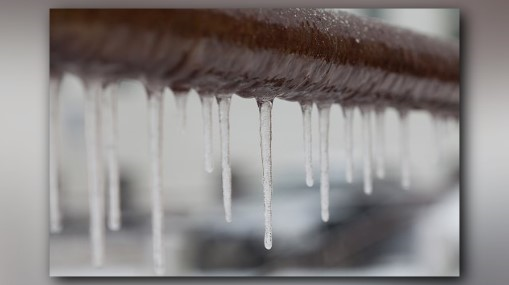Guidance for Avoiding Frozen Plumbing in Cold Weather: Specialist Insights
Guidance for Avoiding Frozen Plumbing in Cold Weather: Specialist Insights
Blog Article
The author is making a few good pointers about How to Prevent Your Pipes From Freezing as a whole in this great article below.

Winter can damage your plumbing, particularly by freezing pipelines. Here's how to stop it from occurring and what to do if it does.
Intro
As temperature levels drop, the threat of icy pipes rises, possibly resulting in expensive repairs and water damages. Comprehending exactly how to avoid icy pipes is critical for house owners in chilly climates.
Recognizing Frozen Pipelines
What triggers pipelines to ice up?
Pipelines ice up when subjected to temperatures listed below 32 ° F (0 ° C) for expanded periods. As water inside the pipelines freezes, it expands, putting pressure on the pipe wall surfaces and possibly triggering them to rupture.
Threats and problems
Frozen pipelines can cause water disturbances, residential or commercial property damage, and pricey repairs. Burst pipelines can flood homes and create substantial structural damages.
Signs of Frozen Pipes
Recognizing frozen pipelines early can prevent them from breaking.
Just how to identify icy pipelines
Search for lowered water flow from faucets, uncommon smells or noises from pipes, and noticeable frost on revealed pipelines.
Prevention Tips
Shielding susceptible pipes
Wrap pipes in insulation sleeves or use warmth tape to shield them from freezing temperature levels. Focus on pipes in unheated or exterior areas of the home.
Home heating methods
Keep interior rooms effectively heated up, particularly locations with pipes. Open up cabinet doors to enable cozy air to circulate around pipes under sinks.
Securing Outside Pipes
Yard hoses and outside taps
Disconnect and drain yard pipes prior to winter. Install frost-proof spigots or cover outdoor faucets with insulated caps.
What to Do If Your Pipes Freeze
Immediate activities to take
If you think icy pipelines, keep faucets open up to relieve stress as the ice thaws. Use a hairdryer or towels taken in warm water to thaw pipelines slowly.
Long-Term Solutions
Architectural adjustments
Take into consideration rerouting pipes away from outside wall surfaces or unheated locations. Include added insulation to attic rooms, basements, and crawl spaces.
Upgrading insulation
Purchase premium insulation for pipelines, attics, and wall surfaces. Appropriate insulation assists preserve regular temperature levels and decreases the threat of icy pipes.
Conclusion
Stopping icy pipes needs proactive procedures and fast actions. By recognizing the reasons, signs, and preventive measures, homeowners can safeguard their pipes during cold weather.
6 Proven Ways to Prevent Frozen Pipes and Protect Your Home
Disconnect and Drain Garden Hoses
Before winter arrives, start by disconnecting your garden hoses and draining any remaining water. Close the shut-off valves that supply outdoor hose bibs and leave the outdoor faucet open to allow any residual water to drain. For extra protection, consider using faucet covers throughout the colder months. It’s also important to drain water from any sprinkler supply lines following the manufacturer’s directions.
Insulate Exposed Pipes
Insulating your pipes is an effective way to prevent freezing. Pipe insulation is readily available at home improvement stores and is relatively inexpensive. Pay close attention to pipes in unheated areas such as the attic, basement, crawl spaces, or garage. Apply foam insulation generously to create a buffer against the cold. You can also wrap your pipes in heat tape or thermostat-controlled heat cables for added warmth.
Seal Air Leaks
Inspect your home for any cracks or openings that could let in cold air. Seal any holes around the piping in interior or exterior walls, as well as the sill plates where your home rests on its foundation. Additionally, make sure to keep your garage door closed unless you’re entering or exiting. Leaving it open creates a significant air leak that can lead to frozen pipes.
Allow Warm Air Circulation
During cold snaps, it’s essential to allow warm air to circulate evenly throughout your home. Leave interior doors ajar to promote better airflow. Open kitchen and bathroom cabinets to help distribute heat consistently around the rooms. If you have small children or pets, be sure to remove any household chemicals or potentially harmful cleaners from open cabinets for safety.
Let Faucets Drip
A small trickle of water can make a big difference in preventing ice formation inside your pipes. When temperatures drop significantly, start a drip of water from all faucets served by exposed pipes. This continuous flow helps prevent the water from freezing. Additionally, running a few faucets slightly can relieve pressure inside the pipes, reducing the chances of a rupture if the water inside does freeze.
https://choateshvac.com/6-proven-ways-to-prevent-frozen-pipes-and-protect-your-home/

I was made aware of that report on How to prepare your home plumbing for winter weather from an associate on another domain. Are you aware of somebody else who is fascinated with How To Avoid Freezing Pipes? Feel free to promote it. Thank-you for taking the time to read it.
Get A Free Quote Report this page